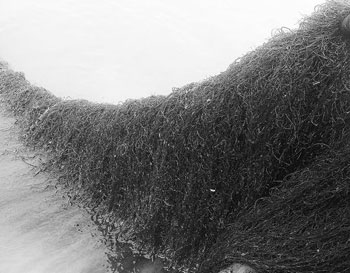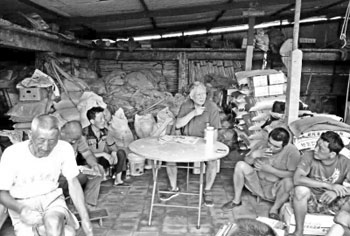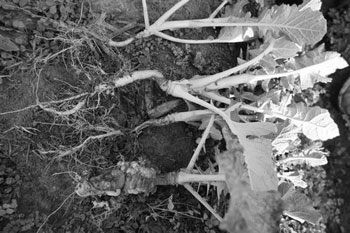The new product of Fujian asparagus is also favored by EU customers.
Original title: a new member of the asparagus family
-- the birth of a new variety of asparagus "Lulong 1"

A new variety of asparagus "Lulong"
China is a big seaweed cultivation country. In addition to kelp and porphyra, Gracilaria is the third largest seaweed cultivation species favored by coastal fishermen because it can extract industrial raw material Agar and can be used as bait for abalone. As for this darling of seaweed cultivation, at a time when people pay more attention to its economic value and environmental benefits, in the laboratory of Ocean University of China, a group of people are working hard and silently for the improvement of asparagus varieties. The emerging new varieties from "981" to "2007" to "Lulong No. 1" not only show the university's dominant position in the field of asparagus genetics and breeding, but also record a series of little-known scientific research stories.
In April 2015, the Ministry of Agriculture announced a new variety of "Lulong No. 1". It is another new member of the asparagus family, which has been added by Professor Sui Zhenghong, key Laboratory of Marine Genetics and breeding of the Ministry of Education of Ocean University of China, and Putian Aquatic products extension Station of Fujian Province for six years.
Inheritance and Innovation: six years of breeding improved varieties
The cultivation of asparagus in China started in the 1970s, when it was mainly cultivated by artificial collection of wild species growing naturally in the ocean, which not only had low yield and slow growth, but also had low Agar content. Therefore, carrying out the genetic research of asparagus and cultivating improved varieties has become a new challenge in the field of marine life. "in the 1990s, my mentor, Professor Zhang Xuecheng, and Fei Xiuyi, a researcher at the Institute of Oceanography of the Chinese Academy of Sciences, first started the research in this field, and bred the first new variety, '981', in 2007 and '2007' in 2014." When it comes to the process of breeding improved varieties of asparagus, Sui Zhenghong is like a family treasure.
In order to solve the problems of single variety structure and degradation of original varieties in the development of asparagus cultivation industry, as the first doctoral student of Professor Zhang Xuecheng, Sui Zhenghong continued along the road of heredity and breeding initiated by his mentor. Since 2009, she has started the hard and tortuous breeding of new varieties of asparagus with the characteristics of "fast growth, high yield and high quality" as the breakthrough point of improvement.
The cultivation of new varieties of asparagus should not only carry out experiments in the laboratory, but also go to the cultivated sea area for field observation. Putian City, Fujian Province is one of the largest cultivation bases of asparagus in China. Sui Zhenghong goes two or three times a year to understand the demands of farmers, check the growth trend of asparagus, observe the changes of climate and sea water, and so on. "in this line of work, you must settle down, go deep into the front line, understand what farmers need, and overcome risks such as wind and waves and seasickness. No new breed can be cultivated in the laboratory alone. " Sui Zhenghong said.
In the journey of cultivating "Lulong No. 1", Sui Zhenghong and her team not only have to overcome natural and physical difficulties such as wind and waves, cold and seasickness, but also have the courage to accept technical challenges, constantly innovate, break through, and lead the industry forefront.
In the eyes of ordinary people, all asparagus look exactly the same, like red silk thread. In the breeding work, it is often necessary to find out the difference between male and female, and the most common thing to do is to distinguish between male and female, which is not very difficult after the asparagus grows and matures, but it is more difficult to distinguish it in its very small seedling stage. In order to speed up the breeding process and save time, Sui Zhenghong led a team to invent a unique "asparagus sex identification molecular marker" technology, which shortened the breeding process by more than half a year. In terms of speeding up the life cycle of asparagus and rapidly promoting the breeding process, they also optimized the technical scheme for asparagus to release spores, thus solving the embarrassing situation of waiting for spores to be released naturally. In addition, in view of the difficulties in screening specific individuals in a large population in the process of breeding, they invented the patented technology of "collecting spores and raising seedlings", which greatly improved the accuracy of screening. In order to standardize the breeding of asparagus, Sui Zhenghong led graduate students for a year and a half to build a character description and quantitative character regression model to quantify the individual characteristics of different asparagus, which laid a solid foundation for efficient and accurate breeding.
In the past 6 years, after population selection, single plant cross breeding, UV mutagenesis and high temperature stress, single plant selection, and 4 continuous subculture of superior lines, they finally cultivated a new variety of asparagus "Lulong No. 1". In July 2014, Sui Zhenghong reported the results of six years' painstaking efforts of the scientific research team to the Ministry of Agriculture. After being examined and approved by the second meeting of the Fifth National Aquatic varieties and improved varieties approval Committee, in mid-April 2015, the Ministry of Agriculture notice No. 2242 made this variety public.
Speaking of the name of this new variety, Sui Zhenghong said that it was first named "Haida Changlong", which not only reflected the achievements of the Ocean University of China, but also coincided with the habits and characteristics of this new breed, but the approving side said that the four words were too long and later changed to "Lulong No. 1." "Lu" refers to Shandong, and "dragon" refers to asparagus. "No. 1" means that this is only the first variety in the series, and new varieties such as No. 2 and No. 3 will continue to be launched, and new variety cultivation is an undertaking with no end.
Breeding of improved varieties: a career with no end
Putian, located in the middle of the coast of Fujian, is known as "seaside Zoulu" and "famous nation of literature". Because of its unique geographical location and climatic conditions, Putian has become a well-known cultivation base in the country, regardless of cultivation area or output. Putian accounts for almost half of China's asparagus cultivation industry.
In mid-August 2015, a happy event that made the local people feel fresh and happy took place in Putian City, Fujian Province, where asparagus has been cultivated for more than 20 years. The locally grown "Lulong No. 1" asparagus has been ordered 50 tons at a time by customers from the European Union. It is the first time that asparagus is exported to the European Union not only in Putian, but also in the whole country.
The reason why "Lulong No. 1" has won the favor of EU customers is first of all due to its outstanding performance in external intuitive indexes such as appearance, growth characters and economic characters, such as: bright red appearance, dense branches, slender algae, uniform thickness, high growth rate and rapid growth. The average length of algae is more than 1 meter in one month in suitable growing season, and the average length of single plant is 2 meters in 2 months. The average yield of fresh vegetables per mu is about 6 tons, and the dry products are 0.75 tons, which is 15% and 30% higher than that of traditional cultivated varieties. Secondly, in terms of internal algae quality, "Lulong 1" also improved qualitatively, the Agar content was 20% higher than that of the wild type, the gel strength was 30% higher than that of the wild type, and the protein content was 12% higher than that of the traditional varieties. the content of phycoerythrin increased by 11% compared with the traditional variety.
For a time, "Lulong No. 1" became a popular variety among farmers and was widely cultivated in Qingdao and Weihai in Shandong Province and Fuzhou and Putian in Fujian Province. "We often get calls to buy a new variety of 'Lulong No. 1', and I tell them that we are just a research and development unit and that we have to go somewhere else to buy improved varieties." Sui Zhenghong said that in 2015, the popularization and cultivation of "Lulong No. 1" reached more than 7000 mu, with an output value of 12000 yuan per mu, and its direct economic benefits reached more than 8000 million yuan.
At present, Sui Zhenghong and his scientific research team are stepping up the cultivation of new varieties of asparagus. "generally speaking, the emergence of a new variety takes at least six to seven years, and the new variety being cultivated has been working for two years. We still have a long way to go." Sui Zhenghong said that asparagus is a species of Gracilaria unique to China, and only China is carrying out large-scale cultivation. China is in the leading position in the world in its genetic breeding research. "We should not only stick to our position in this field, but also continue to explore and innovate to create more scientific research achievements to serve the society and benefit the broad masses of farmers." (our reporter Liao Yang, correspondent Feng Wenbo)
- Prev

The elderly with agricultural materials are looking forward to the high yield of organic matter in spring.
The elderly with agricultural materials are looking forward to the high yield of organic matter in spring.
- Next

The new rape products are resistant and almost eradicate root swelling disease.
The new rape products are resistant and almost eradicate root swelling disease.
Related
- A course of planting techniques and methods on how to grow carrots
- How to plant the latest tulips?
- Is it better to pick tea in the morning or in the afternoon? When is the best time for tea to be picked? what is the third or fifth tea?
- Launch Yuanxiao Happy combination Haocha + Tea Yuan healthy Taste
- Penghu Tourism "Fireworks 20 Parade with You"
- 2022 West Lake Happiness holds "Digital Revitalization Voucher" and draws iphone13 and laptop.
- Banqiao Fuzhou social houses are designed to change start-up combined with police elimination to create a safe and livable environment
- The convenient measure of "mechanical weeding" in Xinbei has been abused and the Agriculture Bureau has imposed heavy penalties on the illegal land consolidation.
- Changgeng University Joins Hands with Four Memory Factories to Rescue Memory Talent Shortage
- The list of Taiwan's top 100 MVP managers is listed by the Director-General of the Farmers' Association of Sanxia District.

